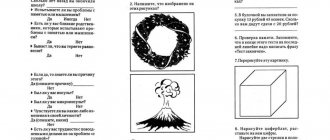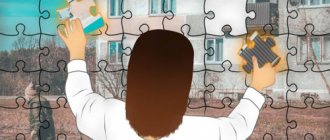Symptoms of depression are the entire set of external manifestations of the disease, the patient’s conditions and reactions, his psycho-emotional changes associated with the development and formation of the disease. Depressive disorder is characterized by a significant variety of clinical symptoms, and in some cases can masquerade as other pathologies and disorders.
Early symptoms
Is it possible to determine exactly when a banal bad mood or an episodic case of overwork turned into the development of depression? Doctors are not always able to identify the moment when the disease debuted. However, there are its characteristic features from which the formation of pathology begins. These features appear blurred or more clearly, isolated from each other, one after another or simultaneously.
Psychologists and psychotherapists recommend paying attention to the appearance of early signs of depression, and remember that some of the listed symptoms may be manifestations of other pathologies of a physiological or mental nature.
Content:
- Early symptoms
- Manifestation of depression of various forms
- Behavior and appearance of people suffering from depression
- How to recognize the condition in yourself
- Signs of recovery from depression
Thus, a person may suddenly be alerted by the appearance of inexplicable fatigue and exhaustion, a feeling of loss and lack of vital energy. Against this background, there is an increased need for rest. To perform normal daily activities, such as going to work or school, a person has to make an effort every day.
Depressed mood and depression are combined with a sharp decrease in self-esteem, the emergence of doubts about oneself and one’s own strengths. The patient feels preoccupied with problems and adversity; the surrounding reality causes fear of the future. Ordinary interests fade into the background, fade and cause much less passion than before. A person shows inattention to everyday affairs and everyday issues; it is more difficult for him to concentrate on work and his responsibilities. Mental work is more difficult than usual. Mental reactions undergo significant changes, the effect of peripheral stimuli on the alpha rhythm of the brain weakens.
Due to problems with self-esteem, increased suspiciousness manifests itself, the feeling that a person is being discussed and judged behind his back. The patient attributes all the problems that happen to him and his loved ones to his own account, takes the blame for them upon himself, and in general becomes more prone to self-flagellation.
Against the background of changes in perception and behavior, a person’s daily routine and usual schedule changes, and sleep takes up most of his free time. To relieve the resulting tension, the affected person turns to alcohol, tobacco, and junk food.
Manifestation of depression of various forms
Clinical
This form is also called acute, psychotic depression, or major depressive disorder. The main characteristic of the disease is the presence of 5 or more pronounced symptoms that last at least 2 weeks and are repeated every or almost every day.
This symptomatology significantly complicates a person’s normal existence in society:
- low mood, which is present throughout the whole day or most of it, an accompanying feeling of sadness and increased tearfulness;
- significant emotional excitability in children and adolescents;
- weight fluctuations with appetite disturbances;
- decrease or complete loss of interest in everything that previously caused it;
- problems with sleep: severe drowsiness, or vice versa, inability to fall asleep, early awakening without objective reasons;
- stable psychomotor retardation or agitation;
- feeling of loss of energy, fatigue, weakness;
- increased feelings of guilt, self-flagellation, feelings of one’s own worthlessness and inadequacy (sometimes reaching the point of absurdity);
- loss of concentration, inability to concentrate, problems with making decisions and taking decisive actions;
- thoughts of suicide, making a plan to commit suicide.
The picture is complemented by somatic manifestations, which are constant and intensifying, especially without the selection of appropriate therapy.
A subtype of clinical depression is the moderate to severe resistant form. It is characterized by either an extremely insignificant therapeutic response to the treatment, or its almost complete absence, when the antidepressants taken do not provide improvement.
Atypical
Doctors distinguish this form as a separate type of depressive disorder, in which, in addition to the typical manifestations of depression, there are also specific signs. The main manifestations are expressed in a sharp increase in appetite, emotional reactivity, severe drowsiness and weight gain.
A disorder with such a clinical picture is very common today, but the causes and mechanism of its development have not been sufficiently studied. There are several versions about this, and some scientists classify atypical depression as a subtype of dysthymia, a severe chronic form, while other doctors say that this disease is a mild variant of bipolar affective disorder. Against this background, diagnosing this type of disease is difficult.
According to the ICD-10 description, atypical depression refers to “other depressive episodes.” As for the American analogue classifier DSM-IV, atypical depression in a patient can be determined if there is emotional reactivity with at least two of the following symptoms attached:
- increased appetite;
- rapid weight gain;
- pathological state of drowsiness;
- severe heaviness in the lower extremities;
- impaired social activity due to an increased reaction to interpersonal troubles and conflicts.
Unlike other forms of depression, a patient with atypical manifestations has an immediate, pronounced reaction to any changes in the external situation. As a result, the patient experiences unstable and constantly changing mood, mobility, polymorphism, and all this against the background of a richly developed emotional sphere. Mood reflects the content and emotional coloring of specific events and situations, so the condition can improve if changes for the better occur in the patient’s life.
Other specific manifestations of the disease:
- increased need for food, cravings for unhealthy foods;
- excessive night sleep and constant desire to sleep during the day;
- feeling of physical heaviness in the body.
The described picture is also superimposed on somatic manifestations, namely a feeling of fatigue and loss of performance, a feeling of emptiness and lack of vital energy, motor retardation, persistent and causeless pain in different parts of the body that cannot be treated with medication.
The affected person is worried about disorders in the digestive tract, problems in the intimate sphere of life.
Recurrent
Remitting, periodic or recurring depression - as the name suggests, we are talking about a disease that tends to periodically worsen and subside. Depressive disorder recurs from time to time, does not have signs of mania, and in general symptoms is similar to classic depressive episodes, except for the duration.
Recurrent depression is accompanied by a depressed mood and a loss of the ability to enjoy what previously evoked positive emotions in the patient. Thinking takes on a distinctly pessimistic character and a negative connotation. A person develops slowness in action and decision-making, worsening sleep, and is bothered by pain in the muscles and stomach. The affected person loses interest in the world around him, in loved ones and friends, his self-esteem decreases and his libido suffers. A general deterioration in well-being and mental health is accompanied by thoughts about death, which become obsessive.
The frequency and duration of exacerbations can vary - from several days to two to three weeks. Typically, an exacerbation of recurrent depression rarely lasts longer, otherwise we are talking about a seasonal form. Some doctors attribute such prolonged depression in a seasonal form to a recurrent course, which is associated with an increase in the duration of darkness, seasonal cooling and weather changes.
Chronic
The chronic course of the disease is considered not as severe as acute depression, but still requires the help of a specialist. People with this diagnosis look constantly unhappy, depressed for no apparent reason. The thought of their own misfortune becomes everyday for them, and accompanies them constantly, although it does not have a significant impact on their lives. A person is able to adequately exist in society and perform work duties. Such patients are said to have a pessimistic outlook on life, although in this case the problem lies precisely in the presence of the disease.
The symptoms, in general, look similar to the clinical form, but are not so pronounced, the disease is expressed somewhat blurred. Chronic depression is characterized by:
- a constantly present feeling of sadness, emptiness and melancholy;
- helplessness, a feeling of hopelessness and hopelessness of the future;
- feelings of guilt and tendency to self-flagellation;
- sleep disorders, when a person either constantly feels sleepy or cannot sleep normally at night, suffering from insomnia;
- anhedonia: loss of interest in normally attractive things, events and activities;
- mental and physical inhibition;
- problems with appetite, its sharp increase;
- difficulty concentrating on something when necessary, memory problems;
- lingering headaches, muscle pain;
- in a deep degree of neglect, thoughts of death appear, a person can plan suicide.
However, dystinia itself is not a static condition, and can transform into other forms of mental damage, for example, acute clinical depression and anxiety-depressive neurosis. Over time, the disease returns to a chronic state. In this case, doctors note that the patient has double depression.
The chronic form of the disease has several course options:
- with a major depressive episode;
- with recurrence of major depressive episodes;
- without a major depressive episode.
Even a qualified doctor is not always able to predict what type of development will manifest itself in a particular patient. It is also difficult to know whether chronic depression will turn into classic depression.
Endogenous
A typical picture of the psychogenic and reactive endogenous form is represented by Kremelin’s depressive triad, namely the combination:
- motor retardation;
- depressed mood;
- slow speed of thinking and intelligence.
The main symptom that determines the course of the disease is hypothymia, that is, a pathological state of vital melancholy. Hypotymia is inseparable from the physically painful sensations and bodily suffering experienced. People suffering from endogenous depression can quite specifically describe the localization of their sensations in a specific area of the body, usually in the neck, chest, or head. In this case, the patient is able to distinguish these sensations from pain accompanying somatic diseases.
One of the first symptoms is mental retardation, when even in the most critical and atypical situation that requires an immediate response, a person is not able to quickly make decisions. Motor retardation is reflected in the patient’s characteristic facial expressions; the so-called “melancholic face” is formed, when the patient looks, regardless of age, like an elderly and tired person. Motor inhibition sometimes reaches a maximum degree, in fact, to the point of numbness, when the patient develops a depressive stupor.
Against this background, the sometimes sudden and uncontrollable attacks of despair along with intense motor agitation are especially clearly noticeable. In this state, the patient may even injure himself.
Endogenous depression is accompanied by depersonalization and anhedonia, when a person suffers from a feeling of absence of any emotions and desires. There is a feeling of a change in one’s own character, a feeling of derealization of what is happening around. The whole world around is perceived as gloomy, dim and joyless.
Secondary signs join a little later - these are delusional ideas of depression, confidence in one’s own guilt and a tendency to self-flagellation. There is a perception of the future as an unpromising development of events. The patient's primary fears, for example, about his own health, loss of well-being or loneliness, form typical delusional and distorted delusional manifestations: psychopathic hypochondria, ideas of self-blame, self-destruction.
The severe form is accompanied by involutional melancholia with a stereotypical anxiety-delusional syndrome: a depressed state, anxious psychomotor agitation, attacks of panic, delusions of condemnation. In this condition, the patient needs urgent medical intervention, otherwise he will develop irrational phobic anxiety, constant agitation and persistent anxiety, delusional worries about inevitable punishment. Ideas about suicide overcome.
At the peak of endogenous depression, the patient develops a mental defect - depressive weakness, in which motor and mental activity sharply decreases, there is neurotic depressed mood, as well as a decrease in sensitive and emotional reactions. Impairments in the functioning of the intellect may also appear. Melancholy with endogenous depression causes significant damage to a person’s supply of vital energy, and this causes him significant anxiety.
In addition, the following vital symptoms are present:
- severe apathy;
- increased fatigue;
- the need to exert excessive volitional efforts to perform ordinary everyday actions;
- problems with sleep and rest, while falling asleep;
- digestive disorders, decreased or excessive increase in appetite;
- inability to concentrate on anything;
- pain of a somatovegetative nature;
- loss of interest in sexual life, decreased libido;
- attacks of panic and inexplicable fear;
- daily mood swings.
In this case, a person is accompanied by a decrease in reaction and response to events occurring around him; the patient seems to disconnect from reality and ceases to perceive information from the world around him.
Diagnosing depression
If a person remains in a bad mood for several days, then it is worth thinking about the presence of disruptions in the nervous system. The presence of depression can be determined by bad mood and other signs only through a specialist conducting a survey about the person’s condition. The Korsakov Clinic has long developed a successful method for the early diagnosis of depression, which develops from a bad mood. To do this, the psychiatrist asks the patient how long the symptoms last and in what phase they occur.
Depression is characterized by the presence of a bad mood throughout the day, for 14 or more days.
There are two categories of people who have an increased predisposition to depression:
1. Genetic disposition. 2. Being in a stressful state.
In addition, local, temporary factors (stress, personal problems, incidents) can also cause depression. And until such situations occur, it is impossible to determine how much a person’s nervous system is influenced by surrounding problems. This is influenced by stress tolerance and other factors.
Behavior and appearance of people suffering from depression
After childbirth (postnatal)
What does a woman with postpartum depression look like? First of all, it should be noted that depression after childbirth is often formed due to the prenatal development of the disease. Even before giving birth, the patient, even in a normal state of mind, has fear, nervousness, depressed mood and painful sensations of various types. If these and accompanying symptoms continue for 2-3 weeks or more, we can talk about the woman having depression.
In the future, after childbirth, an independent return to normal life without medical intervention is unlikely.
The young mother is haunted by a depressed mood, she becomes irritable and angry, feels apathy and deep despair, it seems to her that the whole world is up in arms against her and no one can help. Due to the heavy burden of responsibility, the patient feels constant anxiety, attacks of panic and fear. If it is necessary to vigilantly care for a newborn, a woman becomes physically and mentally exhausted, and her maternal instinct is dulled.
The condition of a young mother without adequate treatment can only worsen, while the world becomes gray and joyless. The patient looks depressed, gloomy, reluctant to make contact, her reaction and expression of emotions are inhibited. At the same time, outbursts of anger and aggression periodically occur; the woman behaves very angrily towards the child, whom she considers to be the source of the problems that have befallen her. The patient has a feeling that those around her are not able to appreciate the depth of her problem, that they do not understand her and are leaving her alone with painful experiences. Social isolation and a craving for loneliness are also associated.
Due to the loss of control over her own emotions, the patient feels severe guilt and helplessness, begins to engage in self-flagellation, and is unable to fully care for the baby. Against this background, she is constantly haunted by a feeling of her own inferiority, worthlessness as a mother. Naturally, in a state of female postpartum depression, the patient cannot provide the necessary amount of warmth to the newborn. For the child, the mother’s depressive state does not pass without a trace, since in this case the necessary level of emotional closeness is not formed between them, and detachment is felt, which traumatizes the baby. Due to an insufficient level of maternal care and affection, a newborn may experience serious mental disorders, since the lack of an emotional connection between mother and child leads to a feeling of insecurity, rejection, and uselessness.
In teenagers
A child who enters adolescence faces physical and emotional maturation, puberty, and his body begins to change. A teenager, feeling changes that are incomprehensible to himself, loses ground under his feet, goes into alienation and confrontation with others, mainly with his parents. Many teenagers feel caught between fading childhood and impending adulthood, so they behave in childishly defiant ways, but at the same time pretend to be treated like adults.
Hormonal and physical changes happen to any teenager, but not everyone becomes depressed during the transition.
As a result of hormonal changes, chemical changes affect the entire body, psyche, and are reflected in behavior. Over time, age-related changes stabilize, and the state of changeability of the psyche disappears. However, this does not mean that teenage depression should not be taken seriously. Moreover, this disease does not always go away on its own, without the help of a doctor. How to recognize depression in a teenager? The main characteristic of symptoms is that they manifest themselves as changes in behavior and emotional background. Adolescents in this state tend to systematically distort their own perception of reality.
The patient rather perceives any surrounding situation in a negative way. In every event one sees confirmation of one’s uselessness and meaninglessness of life. All symptoms of teenage depression and maturing girls and boys are divided into main and additional. The main ones include: low emotional response to external stimuli, regardless of what is happening around; anhedonia of intense manifestation; fatigue, feeling of lack of strength.
In addition, the patient suffers from the following problems:
- a sharp drop in self-esteem;
- oppressive feelings of guilt and worthlessness;
- loss of appetite or its inadequate increase;
- desire for isolation and loneliness;
- sleep disturbances, daily routine, digestion;
- constant fatigue;
- thoughts about death.
The teenager behaves rather detached and depressed, but at times he has attacks of aggression, inappropriate rebellious behavior, and he tends to start conflicts out of the blue. First of all, those closest to him - his parents - are targeted by his behavior. Studying is no longer of interest to the teenager, and he either goes to school, but does not show much progress in school subjects, or begins to skip classes altogether.
It should be noted that boys and girls have different symptoms of depression during adolescence. Girls have severe tearfulness, sensitivity to failures and the opinions of strangers, increased preoccupation with appearance and wardrobe, increased irritability, and repeated and obsessive conversations about death.
With boys the situation is more complicated. Unfortunately, the male half of the population is raised from childhood with the destructive attitude that “boys don’t cry” and “only girls whine.” As a result, the growing man believes that any manifestation of emotion on his part is unacceptable, and prefers to keep all his pain, fear and depression as deep as possible within himself.
In general, boys in adolescence tend to be more closed off than girls, so it is more difficult to determine whether they have a depressive disorder. The following signs should alert parents: nervousness with signs of aggression, taking out anger on family members, especially younger ones, and pets, repeated conversations about murder, suicide, as well as constant presence at the computer, the desire to hide from the outside world in computer games.
The most difficult period for adolescents is considered to be the age from 12 to 14 years, and 16-17 years.
During menopause
The period of menopause for a woman is as mentally dangerous as pregnancy and childbirth. At this time, a global restructuring of all systems takes place in her body, including the endocrine system, and physiological preparation for approaching old age. The symptoms of the disease are characterized by stability, lasting for more than 2-3 weeks.
A woman experiences the following signs of menopausal depression:
- fatigue, loss of strength;
- desire for social isolation, loneliness, severance of social ties;
- a sharp drop in self-esteem associated with ongoing changes in appearance;
- attacks of fear, anxiety, uncertainty about the future;
- persistently negative thoughts, pessimism and a gloomy outlook on life;
- mood swings and short temper;
- outbursts of aggression.
Often this condition is accompanied by an exacerbation of hypochondria, when a woman tends to exaggerate her health problems and look for new ailments. In general, the state of health deteriorates somewhat - unexplained abdominal pain, headaches, digestive disturbances appear, and appetite disappears.
At different times of the year
The most common types of female and male depression, depending on the seasons, are autumn and spring. It should be noted that the onset of spring or autumn itself does not affect the development of depression in men and women who initially have a stable and healthy psyche and do not have a hereditary predisposition to the onset of the disease. However, if the patient has previously had depressive episodes or has a chronic course of the disease, there is a high probability that changes in the season, and, as a result, weather, temperature, length of day and night, will provoke an acute depressive state.
Doctors believe that the autumn deterioration of a person’s mental state occurs as a result of the fact that daylight hours sharply decrease, while the surrounding world literally becomes darker, grayer and faded.
However, the main reason why with the onset of autumn a person becomes more susceptible to developing a depressive disorder is a decrease in the production of serotonin in the brain. In this case, taking serotonergic antidepressants provides a visible improvement in the condition.
Depressions that form in the autumn-winter period are endogenous, and the development of the disease largely depends on the presence of a hereditary predisposition.
How does autumn depression manifest itself? Classic symptoms of the disease are depressed mood, loss of interest in life and what is happening around, loss of interest in normal activities, and atypical fatigue. The autumn type of the disease usually involves all three manifestations, but they are rather weakly expressed and do not attract the patient’s attention too much.
Solo signs of depression, which especially often plague the affected person:
- severe drowsiness during the day;
- increased or loss of appetite;
- inability to concentrate;
- night insomnia;
- feelings of apathy, indifference and anxiety;
- motor restlessness, fussiness;
- inability to make decisions, to complete what is started, even to the point of procrastination.
The usual duration of the disease is 3-3.5 months.
Complicated autumn depression occurs with the addition of a heightened sense of guilt, when the patient blames himself for literally everything that happens to him, his loved ones and the world around him as a whole. Against this background, it seems to him that if he were gone, it would bring relief to those around him, but his life has no meaning. The result of this condition is constantly present thoughts of suicide, sometimes leading to actual attempts to commit suicide.
The course of spring depression in men and women is somewhat different, which can be easily explained by the mental characteristics of each gender.
Men are more inclined to hide their experiences and hush up problems, because they believe that complaints undermine their authority and masculinity. Because of this, their spring exacerbation often goes unnoticed by them and those around them. It should be noted that some changes in behavior are still present, and the patient suffers from this torment of the family and others. Doctors say that depressive disorder contributes to a decrease in testosterone levels in a man’s body. Because of this, the affected person feels physically and mentally uncomfortable, his memory and attentiveness decrease.
Patients aged 55-60 years are most susceptible to spring-type diseases, since older people suffer most from global hormonal changes. The man remarks:
- chronic, all-consuming fatigue;
- lack of sleep, or, conversely, severe drowsiness;
- changes in body weight, diarrhea and digestive disorders that occur for no apparent reason;
- slowdown in mental and physical activity;
- irritability, outbursts of anger;
- a sharp change in thinking style in a negative direction, increased anxiety, attacks of fear;
- problems with potency;
- suicidal thoughts.
In women, the course of spring depression begins with the first weather changes. It would seem that at first a person waits all winter for the onset of warmth and light, and when spring actually comes, he develops a strange state of dissatisfaction. Women notice increased tearfulness, loss of strength, melancholic attacks and depressed mood. In addition, the symptoms are accompanied by irritability, physical weakness, feelings of anxiety and causeless restlessness, decreased self-esteem and dissatisfaction with one’s appearance. Patients complain of apathy, difficulty concentrating on daily activities, headaches and dominant negative thoughts.
Main and indirect symptoms of depression
It is important to learn to distinguish between simply a bad mood and the harbingers of a depressive mental disorder. In the second case, the timely intervention of an experienced psychologist is necessary, who will prescribe effective treatment. Trivial things can help with a bad mood, ranging from glycine tablets to simple rest and relaxation.
Key symptoms of depression are:
— Noticeable decrease in energy, fatigue; - Loss of interest in people around you and activities that previously brought you pleasure (for example, loss of interest in a hobby); — Sleep disturbance and partial loss of appetite; - Decreased self-esteem; - Suicidal thoughts, thoughtfulness about the goals of life.
Depression can also be recognized by external signs. For example, the skin with such disorders becomes paler. And with prolonged manifestation of 2 weeks, weight loss is noticeable.
How to recognize the condition in yourself
Of course, depression, like any other disease, does not allow self-diagnosis and self-medication. However, in order to consult a doctor for help, you first need to realize that you have a problem, a health disorder, and not just a bad mood or vitamin deficiency.
How do you know if a particular person is experiencing depression? Unfortunately, those around you are rarely able to identify this disease in loved ones, despite the fact that they notice changes in the patient’s behavior. However, only an experienced psychiatrist or psychotherapist can understand that the reason for this is depression.
Some people are generally inclined to devalue the diagnosis, since every time they experience a bad mood, they say that they probably have depression. However, if a bad mood goes away on its own and usually does not linger for a long time, a depressive disorder tends to worsen without treatment, and its symptoms haunt the patient constantly or with rare breaks. Some symptoms should alert a person who suspects depression, or simply feels that something is wrong, but cannot understand what exactly (and this is how undetected depression most often occurs).
A negative mood that is long-lasting, lasting, lasts from 2-3 weeks, and appears every or almost every day - the first sign that catches your eye. If every day becomes more bleak than the previous one, and over the past month a person is not able to remember a single day or event that would please him, you should be wary.
This state usually comes with depression, a feeling of hopelessness and lack of any prospects.
You also need to pay attention to the quality of your sleep. If it becomes difficult to fall asleep in the evening, night sleep is constantly interrupted and does not bring relaxation, and waking up in the morning occurs unreasonably early, this is one of the signs of depression. The other extreme is constant drowsiness, which develops against the background of feelings of exhaustion, tiredness and lack of strength.
Problems with eating habits manifest themselves in the form of loss of appetite and complete lack of interest in food, or an increased need for food. Problems with activity and daily activities are also alarming - everything falls out of hand, and making even the simplest decision causes stupor. It becomes extremely difficult to concentrate on usual activities.
One or more of the above symptoms should not be taken as a basis for self-diagnosis, however, in total, if they last more than 3 weeks and significantly worsen a person’s quality of life, you should visit a psychotherapist or psychiatrist.
In addition, there are various psychological tests and questionnaires to determine the level of stress, susceptibility to depressive disorder, as well as whether a person is directly depressed. You can go through them yourself online on Internet resources. Among the most popular tests are the Beck scale, the Zung scale, and the Edinburgh scale. All these tests are based on a choice of answer options to specific questions regarding life situations. Based on the results, points are awarded for the answers, which are then summed up, or the content of these answers is directly analyzed.
One of the dangers of a depressive disorder is that the patient himself is often not able to either determine the presence of the disease, or generally admit that he has certain problems.
We are talking about denial, which, by the way, is the beginning of the formation of classical depression. Denial of a depressive state is that a person, despite feeling some discomfort that was not there before, pretends that nothing is happening, as if living by inertia, continuing to go about his business. However, at the same time he has to put in much more effort than usual. Depression in this case can occur in a hidden and blurred form.
The difficulty in determining the presence of depression is the so-called masked form, when the manifestations of the disease are disguised as symptoms of other pathologies. A person is constantly faced with unpleasant manifestations, sometimes even with the need to seek medical help, but it does not bring the expected relief, since the true nature of the symptoms must be treated by a psychologist or psychotherapist.
Masks of depression can be signs of somatic diseases, for example, vegetative-vascular dystonia and pressure surges, as well as psychological disorders, hypochondria, obsession and other pathological conditions.
What signs can be used to determine that a person is stressed?
Scientists identify 4 groups of main features:
- Mental - manifested in the inability to solve complex problems, long concentration and difficulty in making decisions.
- Emotional - a person can experience fatigue, apathy, depressed mood, lack of energy, suicide attempts, insomnia.
- Behavioral - if you carefully observe a person, you can see sudden mood swings, anger, irritability, nervousness, sadness, desire for solitude.
- Physiological - increased or decreased appetite, constipation, decreased sexual interest, body pain, loss of interest in favorite activities.









